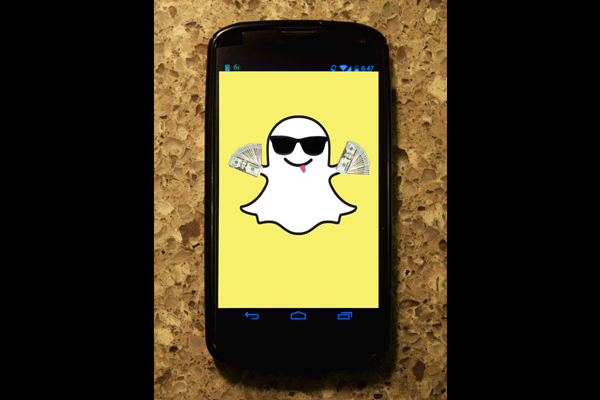New feature could lead to reckless spending, security breaches
Photo: Remi Yuan, edits: Marta Kierkus
Since its initial release in 2011, Snapchat has come to dominate the mobile app marketplace. This photo/ video messaging service has amassed hundreds of millions of users world-wide, being especially popular with millennials thanks to its fun and easy-to-use interface.
This app has become so well-known that its developers have even started to offer a money transferring service called Snapcash, which allows Snapchat users (over the age of 18) to send each other small amounts of currency via text message.
Snapcash flaunts the same “fun and easy” quality as its photo messaging counterpart, and that isn’t a good thing. Snapchat’s poor security record and laissez-faire attitude toward information distribution have a high potential for disaster. This isn’t good news for a service that’s supposed to handle your bank account.
The first quality you would look for in a mobile payment system is airtight privacy and security settings. Snapchat has proven that it isn’t ready to handle that kind of responsibility.
For one thing, the app’s security features are flimsy and have been subject to a couple of massive hacks in the last year. On New Year’s Eve 2013, the names and phone numbers of about 4.6 million Snapchat users were stolen and posted online. This October, hackers obtained at least a hundred thousand “deleted” user photos, despite Snapchat’s assurances that these kinds of images disappear from your phone after receiving them.
These security breaches mostly stem from Snapchat’s basic encryption software, something that security experts like Chris Wysopal, chief technology officer of the app security company Veracode, call “the bare minimum” when it comes to privacy settings.
For this reason, Snapchat has been publicly condemned by digital rights groups like the Electronic Privacy Information Centre and the Electronic Frontier Foundation, mostly because of its inability or unwillingness to protect its users’ private information.
In an era when online fraud and invasive Internet hacking is at an all-time high, I wouldn’t trust Snapchat with my grocery list, let alone my debit card number.
The app’s approach to sharing information is also poorly suited to financial exchange. The whole appeal behind Snapchat is that it lets users share images that are supposed to be taken spontaneously or in the spur-of-the-moment. While this technique works fine for sharing goofy selfies, it does not encourage sensible financial decision-making.
When someone decides to purchase something or send their friend money, (no matter what the amount) that act should always be given serious consideration. But when people use Snapchat they are not in the correct venue to distribute something of value. They are looking to deal with electronic information that’s cheap and disposable.
If you’re absolutely desperate to find a mobile app that allows you to transfer money, there are so many other alternatives. Services like Venmo, Paypal, and Google Wallet all have much better security ratings than Snapchat.
Right now, my biggest concern is that Snapcash users, who are mostly young people, will begin to treat their money like they do their images on Snapchat: a worthless text message that they never have to see again after they push “send.”
https://www.youtube.com/watch?v=kBwjxBmMszQ





